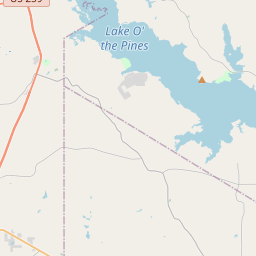Smyrna Cemetery
Historical marker location:






Pioneer physician John Chadd received a land grant in 1845 made by Texas Governor J. Pinckney Henderson. Dr. Chadd donated land to the community in 1846 to be used for a church, school, and cemetery and chose the community's biblical name of Smyrna. This cemetery dates to 1850 when John Glover was buried in an unmarked grave. The earliest headstone is that of Susana Kirkpatrick in 1859.
Dr. Chadd deeded two acres of land in 1874 to the Smyrna Methodist Episcopal Church. The cemetery has been closely associated with the church through the years.
Tombstones mark the graves of Dr. Chadd and his wife Emily Jane Taylor, and other early settlers who lived and died in the area. Among the more than 675 graves are those of veterans of conflicts from the Civil War to the Vietnam War.
The Smyrna Cemetery Association was established as a non-profit organization in 1954 by the people of the Smyrna community. Additional land was donated to the cemetery in 1962 and in 1974. Annual meetings have been held at the cemetery since 1946. The site continues to serve Smyrna and many surrounding communities. (1997)
As one of the most visible programs of the Texas Historical Commission (THC), historical markers commemorate diverse topics in Texas history, including: the history and architecture of houses, commercial and public buildings, religious congregations, and military sites; events that changed the course of local and state history; and individuals who have made lasting contributions to the state, community organizations, and businesses.
The state flower of Texas is the bluebonnet. The flower blooms in the spring and is a common sight along the highways and in fields throughout the state.
During the mid-19th century, Harrison County played a significant role in the development of Texas. The discovery of oil in the nearby East Texas Oil Field in 1930 brought prosperity and growth to the county. This led to the establishment of several oil companies, driving economic development and creating job opportunities for local residents.
Harrison County was also deeply impacted by slavery and the Civil War. Prior to the war, the county was home to numerous large plantations that relied on enslaved labor for agricultural production. The war left a lasting impact on the county, which continued to struggle with racial tensions and inequality in the years following the war.
Today, Harrison County remains an important part of Texas history and boasts a diverse and vibrant community. The county is home to a number of historic sites, including the Texas and Pacific Railway Depot and the W.C. Dewberry Home and Museum, which showcase the area's rich cultural heritage. With its blend of history and modern progress, Harrison County continues to be a significant contributor to the growth and development of Texas.
Harrison County Timeline
This timeline provides a glimpse into the major events and milestones that have shaped the history of Harrison County, Texas.
- 1839 - Harrison County established as a county in the Republic of Texas
- 1840 - Marshall becomes the county seat of Harrison County
- 1861-1865 - Harrison County residents serve in the Confederate Army during the American Civil War
- 1873 - Great Fire of Marshall destroys much of the city
- 1881 - First telephone exchange established in Marshall
- 1902 - Texas and Pacific Railway brings economic growth to the county
- 1930s - Oil discovery leads to an economic boom in Harrison County
- 1979 - East Texas Oil Museum opens in Kilgore, showcasing the region's oil industry
- 2005 - Hurricane Rita causes significant damage to the county
- 2020 - Present day